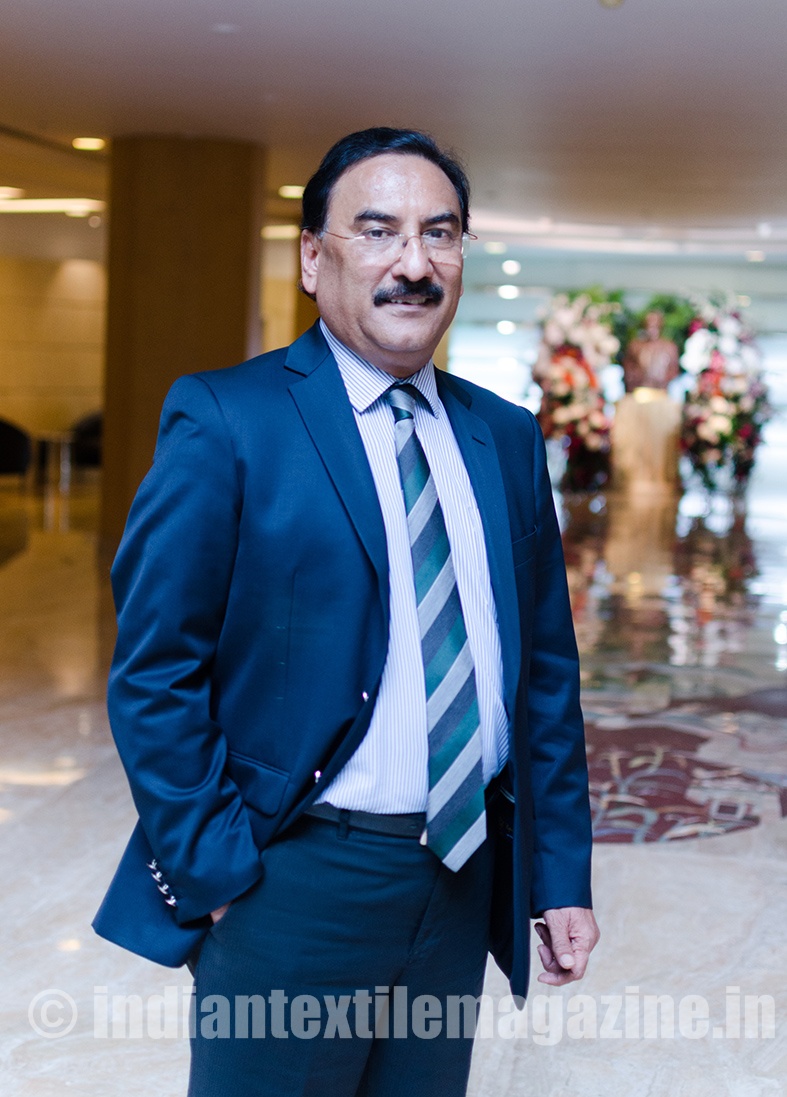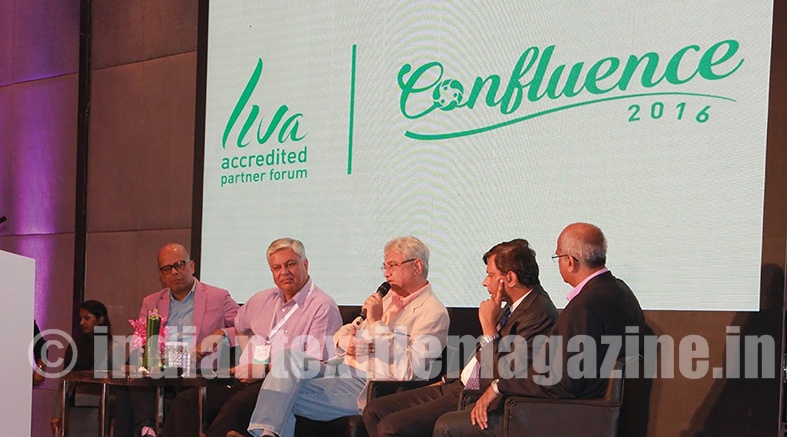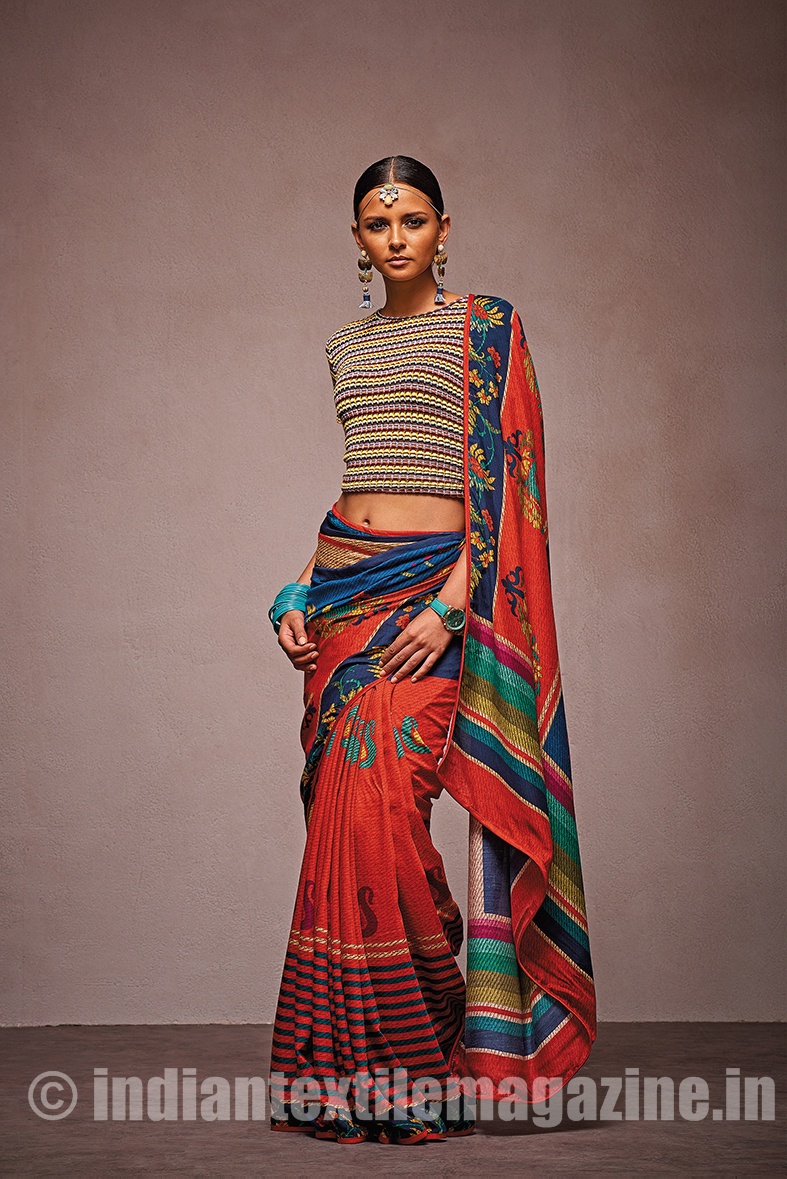LIVA, the fabric brand backed by Birla Cellulose – Glamorous excellent quality fabric manufactured by using viscose staple fibre from the Aditya Birla Group with eco-friendly non-polluting process and passed through an accredited value chain for quality, has a strong sense of social responsibility in terms of sustainability of raw material while ensuring a comfortable feel and wear. It easily blends with any other fibre man-made or cotton while delivering a fashionable fabric all by itself.

A Modal fibre, though derived from wood pulp, Birla Cellulose stands tall in manufacturing it in the most eco-friendly manner, by not polluting with its eco-friendly processes and by not reducing the forest cover through agro and social forestry concepts giving more to the forest cover than taking away from it.
A short snippet with Mr. Dilip Gaura, Chemical Engineer, has also undergone several national & international programs in management & leadership development, including AMP at Harvard. He had a long stint with Hindustan Lever for 24 years before he moved over to the Aditya Birla Group to handle its Palmolien business in Malaysia, then to Egypt to run the Carbon Black business, and thereafter to the metals division as in charge of Copper. After a brief stint in Cement, he is now part of the Pulp and Fibre Division, “To serve the customer and to delight him” rightly and humbly is what Mr. Dilip Gaur seeks to do.
According to him, LIVA as a brand has thrown sweet surprises in terms of consumer acceptance as it is very versatile in terms of fluidity, enough to harness Glamour and Comfort. LIVA has won more than 22 brands to find its place in garments in over 140 cities and 2,000 stores in Spring Summer 16 alone.
Mr. Dilip Gaur proposes to double this number in the next 2 to 3 seasons. Sales numbers grew from 2.3 million tagged garments to seven million garments in just an year’s time. Though he admits it’s just a start, a lot remains to be done. LIVA has a whole lot of potential to be tapped.
Under his leadership LIVA would explore its potential expanding to larger categories, especially in the women wear segment. After finding initial success in leggings, it would move into the Rs. 40,000-crore saree market and establish its presence soon.
Foraying into the blended fabric for sarees would be LIVA’s single largest strength. LIVA stands out proud when it comes to manageability of the blends in sarees. The other categories LIVA would set its eyes on would be the lounge wear, kurti, knitted tops & children wear too, which is equally big in terms of market potential.
Mr. Dilip Gaur’s focus is on women wear for now to establish and move onto areas like men’s wear and home textiles. He doesn’t want to run thin but rather focus on and consolidate carefully picked segment after segment.
He plans to roll out a road map in terms of complete logistics set-up integrating the fabric converters, designers and marketers for the women segment, which he calls the LIVA Accredited Partner Forum (LAPF) that adds value at every step to ensure the fibre delivers its full potential in the final product.

He asserts that the LAPF programme is a great success. More than 30 per cent of production finds its way through LAPF. It adds value to the value chain of process in terms of R&D support, vendor management support, and marketing support while catering to the discerning consumers. At every stage, it is building the competencies of the Indian partners to meet the global standards at most competitive costs.
There are agencies to support and audit that pre-determined LIVA standards are being followed by the LAPF partners to ensure quality. Today the partners playing a part in LAPF number is 350. LAPF or similar concept maybe introduced globally too.
Mr. Dilip Gaur is in no hurry to increase the number of LAPF programme partners but rather focus on creating quality partners on a long-term basis, for the overall benefit of LIVA as a brand.
He adds that the company market share is growing at 12 per cent year on year since 2015 for viscose. Taking into account the breathability, drapability and moisture management, viscose has a lot of potential which he puts with an air of confidence with no room for crystal gazing. With the added benefits like sustainability of raw material it is poised to enhance and play the part of a comfort partner.
With a global market share of approximately 18 per cent, Birla Cellulose has its focus on eco-friendliness. While sourcing wood from trees in Canada and Sweden, it has ensured the forest cover increase and not otherwise. It practices social forestry in India to source the raw material by handing over saplings to farmers to cultivate and harvest. Certification agencies CANOPY and FSC have certified their eco-friendliness in terms of growing more forest cover than reducing them.
Asked about the growth and demand for LIVA, Mr. Dilip Gaur acknowledges the fact that there would be a need for capacity expansion at Birla Cellulose for VSF fibre production. There seems to be a definite plan in place for a further capacity expansion, taking into consideration the point that the market for cotton fibre is reducing year on year while that for man-made fibre is increasing at five per cent per annum. In the man-made fibre, there seems only an upward curve for viscose in the years to come, given the fact fact the fabric fluidity concept and acceptance it offers to the consumers and sustainability credentials to the industry.
When it comes to the in-depth knowledge in textiles, the Indian textile industry has a sweet spot in terms of retaining its share. The business models may have to be changed to keep the cost competitive as in any other sector as they are transient in nature. Like LIVA, which is the first of its kind globally, the strength of the Indian textile industry cannot be challenged easily.
Like any cost sensitive production sector, the textile industry too is transient. Moving from Europe to Asia and now spreading within Asia to smaller nations, India can hold its technical expertise of innovation and capability of re-calibrating its business models to stay ahead of the competition in this ever changing and ever growing textile industry. With players like Birla Cellulose, leading through its innovative strategies, India has a big advantage in the Game of Textiles.
